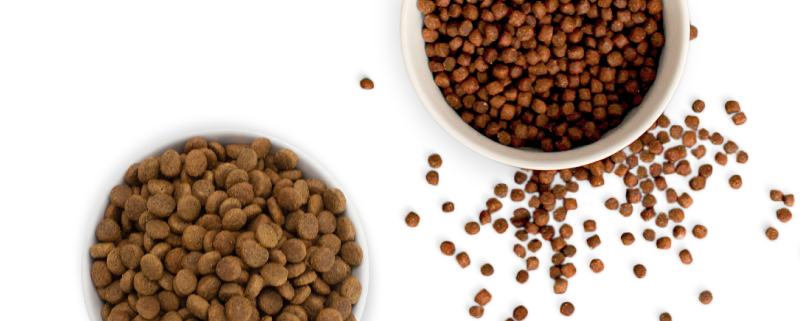I fuochi d'artificio per alcuni sono un'opportunità per perdersi nella magia delle luci intense che esplodono nel cielo della notte fredda, godendo del calore di un falò e una buona scusa per incontrarsi con gli amici o per celebrare grandi eventi o occasioni religiose.
Tuttavia, per molti genitori di cani, può essere molto preoccupante e stressante a causa dell'impatto che ha sui loro amati animali domestici.
Dal punto di vista di un cane, per nessun motivo, sono esposti a un sovraccarico sensoriale. Molti rumori rumorosi e insoliti, specialmente se si considera quanto sia più sensibile il loro udito del nostro (è l'apertura del frigorifero?). Aggiungete a ciò l'impatto visivo di molti lampi regolari ma casuali di luce, e ha perfettamente senso il motivo per cui molti cani troveranno l'intero evento incredibilmente sconvolgente.
Alcuni cani affrontano davvero bene queste situazioni, il che potrebbe essere perché sono molto rilassati, o hanno un udito più povero, o dormono molto pesantemente e sono in grado di ignorare tutto.
Tuttavia, se il tuo cane ha una sensibilità al rumore o è reattivo del rumore o facilmente sorpreso, è probabile che troveranno questi eventi impegnativi. Alcuni cani possono sviluppare associazioni negative con i fuochi d'artificio, ad esempio, se hanno sbattuto la testa quando è stato ascoltato un fuochi d'artificio, potrebbero associare l'infortunio al suono. Diversi cani mostreranno questo stress in modo diverso - da segni molto lievi di essere un po 'bisognosi, non in grado di dormire, voler nascondersi, ansimare, a segni più estremi come abbaiare o anche espressioni più gravi di angoscia, come scavare, distruggere arredi morbidi o persino cercando di sfondare le porte.
Può anche essere snervante cercando di portare fuori il tuo cane a fare una passeggiata per il bagno la sera. Alcuni preferirebbero non uscire affatto e aspettare fino a quando percepiscono che la minaccia è finita, o scherzare in casa, piuttosto che uscire in questi periodi.
Quindi quali migliori consigli dobbiamo cercare di aiutare i nostri amici a quattro zampe per attraversare la stagione dei fuochi d'artificio?
- Dai al tuo cane abbastanza esercizio fisico e stimolazione mentale durante il giorno in modo che siano stanchi la sera.
- Assicurati di aver portato fuori il tuo cane all'inizio della giornata (prima del tramonto) per consentire loro di fare pipì e cacca senza essere sorpresi o ansiosi quando iniziano le attrazioni e i suoni.
- Dai al tuo cane un pasto ricco di carboidrati (come la pasta bianca o le purè di patate) in quanto possono provocare una stanchezza naturale che può togliere il bordo da un momento difficile.
- Crea uno spazio sicuro in cui il tuo cane si sente sicuro: le casse sono perfette per questo, ma puoi anche usare una scatola di cartone. Questo dovrebbe essere posizionato in una parte tranquilla della tua casa. Rendilo invitante e comodo fornendo molte coperte e biancheria da letto.
- Controlla le pagine del consiglio locale e di Facebook per vedere quando si verificano display di fuochi d'artificio in modo da poter essere preparato.
- Tende e finestre chiuse per ridurre i rumori e i suoni a cui il tuo cane viene esposto.
- Riproduci musica per cercare di coprire i rumori dei fuochi d'artificio.
- Avere un'attività alternativa pronta per il tuo cane per distrarli dai rumori del mondo esterno, come un nuovo gioco cerebrale, masticare giocattoli o prelibatezze.
- Assicurati che il tuo animale domestico sia microchip e abbia dettagli aggiornati sul loro colletto in modo che se dovessero fare una pausa per questo e fuggire dalla casa, ci sono maggiori possibilità che vengano restituiti.
- Non lasciare il tuo animale da solo in modo da poter confortarli e rassicurare e potenzialmente impedire loro di ferirsi o danneggiare la tua casa.
- A Omni abbiamo formulato "cani pacifici". Questi deliziosi snack contengono una radice di Valerian che è stata utilizzata per migliaia di anni per aiutare a migliorare il sonno e possono anche aiutare ad alleviare l'ansia. Il balsamo per limone è un altro ingrediente chiave in questa ricetta, può aiutare a ridurre lo stress e l'ansia. Insieme, questi sono stati formulati per aiutare il tuo cane a rilassarsi e possono essere una deliziosa sorpresa prima di coricarsi.
- Omni produce anche a Supplemento di 1 al giorno "stress e ansia", Formulato dai veterinari. Contiene l-triptofano, passione fiore e teanina per le loro proprietà calmanti.
- Sono disponibili trattamenti aerosol plug-in con feromoni che possono far sentire i cani più comodi.
- Alcuni farmaci per banco possono aiutare a ridurre la loro reazione a eventi stressanti. La maggior parte (se non tutti) di questi prodotti deve essere somministrato nelle settimane prima dell'evento stressante, quindi vale la pena essere preparata e averli pronti prima che diventi un problema.
- Ci sono alcuni farmaci da prescrizione disponibili che sono più forti e possono beneficiare i cani con sintomi più gravi: avvicinarsi al veterinario per ulteriori consigli su questo.
Se hai un giovane cucciolo, puoi provare a prepararli giocando video di fuochi d'artificio (a partire da un volume basso e aumentando gradualmente) e dando loro prelibatezze per rafforzare i comportamenti calmi e rilassati. Questo aiuta a desensibilizzazione prima che siano esposti a uno scenario più incontrollato.
Se il tuo cane sta ancora lottando o ha gravi segni di stress e sei preoccupato per il fatto che si facciano male, parla con il veterinario, poiché ci sono farmaci che possono aiutare.
In caso di domande, il nostro team di veterinari è sempre felice di aiutarti. Puoi contattarci a woof@omni.pet



